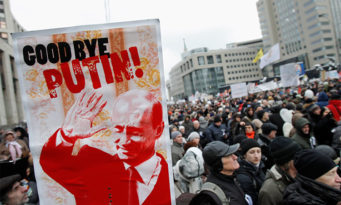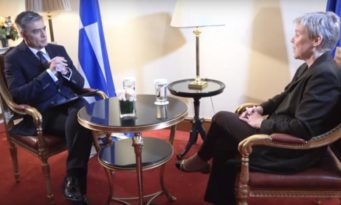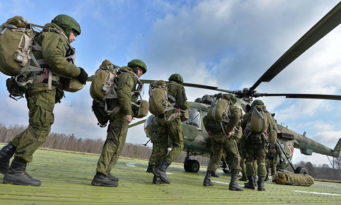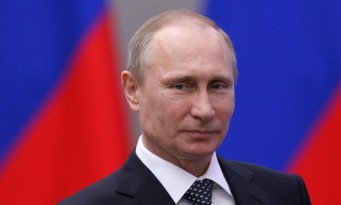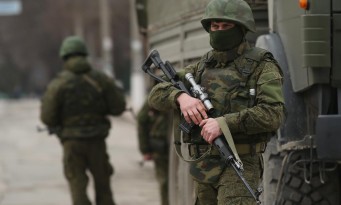Adaptation: From Wales and Warsaw to the Brussels Summit – Next steps for NATO
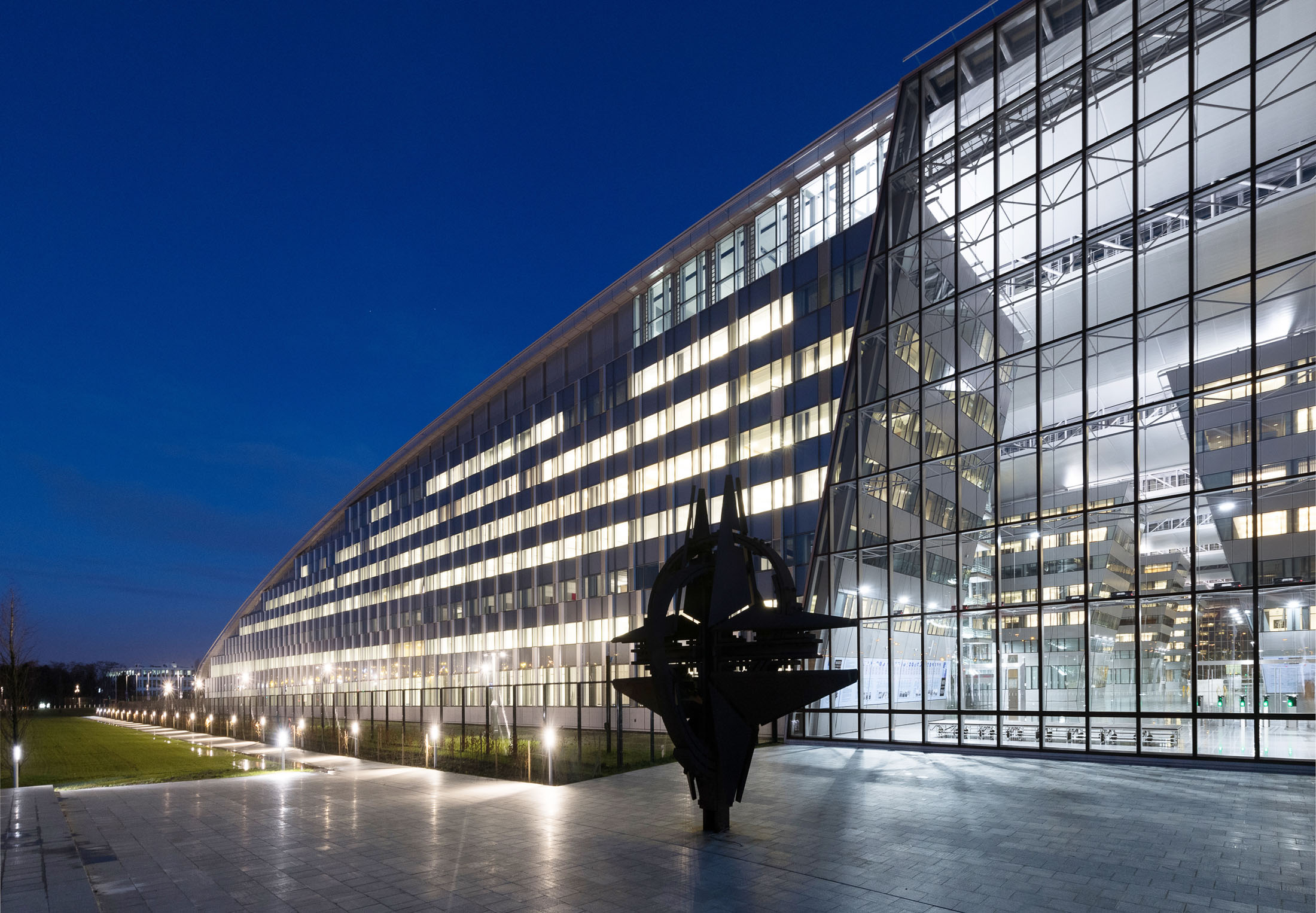
- By Octavian Manea
The July NATO summit is a key moment in which the Alliance needs to be able to move towards filling the remaining gaps in NATO’s adaptation.
Defence Matters interviewed Nick Pickard, British Deputy Permanent Representative to NATO, about the latest British fusion doctrine and the steps that the Alliance still needs to take after the Wales and Warsaw summits. In his opinion one aspect of the adaptation that NATO should consider is to focus more on the resilience against the attacks that are operating under the threshold of the traditional military aggression: “while our deterrence against military threats is working, we see Russia also operating comfortably in the space below that threshold. Clearly we haven’t solved how we deter hybrid attacks, because we are all facing attacks of that nature. So we need to understand how we can be resilient against these attacks.”
by Octavian Manea
Ambassador MacIntosh was talking in her latest RUSI speech in April about a NATO adaption process built essentially around three lines of efforts – military, political, institutional. The just published British National Security Capabilities Review is advancing the idea of a fusion doctrine. What is this fusion doctrine? Do you see the need for a different adaptation, a fusion doctrine (a whole of government machinery at the theater level to compete across political, economic, and military arenas) also at the NATO level?
The fusion doctrine recognises that many of the threats that we now face come at us from multiple angles. So we need to bring together all the tools of government in order to deal with them. On the one hand, we see from Russia a clear military threat. Putin used his State of the Nation speech to boast of new military developments, new missiles and capabilities he has been developing. But in addition to the military threat, we find Russia comfortably acting in the space just below what we would call Article 5 threshold, an area where they don’t expect a military response. They are conducting cyber attacks against national infrastructure, interfering in political campaigns, projecting misinformation on social media or, as we’ve seen in the UK, deploying chemical weapon directly on our streets to attempt an assassination. This level of threat clearly needs a range of different tools in order to deter it. Similarly, the terrorist threat as it has evolved and the threat from organised crime are not purely military threats, but require our police, security and intelligence agencies, border control, education and other parts of government to work alongside our defence and diplomatic tools to deal with them. What we have tried to do in the UK is to bring the instruments available across the governmental spectrum together so we understand better what we are facing, and to work out how to tackle it together.
NATO is of course a political-military alliance and doesn’t have all these tools available directly under its control. But it needs to understand how NATO can contribute and operate alongside these other security tools. One lesson from recent exercises in NATO has been that, as NATO commanders develop a military posture to deter or react to a potential threat, many other things will be happening which our decision-makers need to take into account: e.g. perhaps a social media campaign making accusations about NATO’s presence, or claims and counter-claims on what was happening, or indeed cyber attacks against NATO infrastructure and NATO allies. In looking through our political and military lens we needed to understand the entirety of this environment in which we were operating, how our actions would be perceived, and what other actions we could take to try and alter that environment. NATO, while it will not have all the answers, needs to be part of the answer, often working in collaboration with the EU, but also with the individual allies who have within their own governments other national tools that will be relevant.
Wales and Warsaw summits were essential for setting up the scene for NATO’s adaptation to the post Crimean security environment. What are the unfinished businesses that we still need to contemplate for developing an effective deterrence architecture on the Eastern Flank?
I see three categories of unfinished business. The July summit is a key moment in which we need to be able to move towards filling these gaps and understanding our future direction.
First, we need to deliver on the commitments already made in Wales and Warsaw. We’ve done a lot. As Ambassador MacIntosh said, NATO has adapted extremely fast since the 2014 invasion of Crimea, particularly in the military sphere but also politically and institutionally. We have an enhanced forward presence in the Baltic states and Poland; we have a tailored forward presence in the south-east of the Alliance; we have introduced cyber defence as a domain; we are adapting our nuclear posture to the new threats that we face; we have improved our maritime posture. The UK has contributed significantly to all of these, not least the planes, ships and troops we have deployed regularly to the Black Sea region. But there is more to do. And while all Allies have turned around decreases in defence spending, adding significant new defence investment, not all yet have plans to fulfil their 2% pledge. Romania’s contribution has been impressive: it meets the 2% target and is also providing capabilities to NATO’s operations.
Secondly, we need to enhance those commitments because we need to make our deterrence more credible. So we have the initial forces in place, but we need to be able to reinforce them, and have the air and maritime enablers that allow those forces to operate effectively together. We need the military mobility, readiness and the speed of decision making that allows us to use those forces quickly, the physical infrastructure that allows us to move those forces into place, and teams such as that in Romania that are able to receive the forces. But while our deterrence against military threats is working, we see Russia also operating comfortably in the space below that threshold. Clearly we haven’t solved how we deter hybrid attacks, because we are all facing attacks of that nature. So we need to understand how we can be resilient against these attacks, and we need to call Russia out and demonstrate we know what she is doing. We need to maintain our political unity as we’ve seen after the attack in Salisbury. And we need to make sure that we are holding up the rules-based international order. We need to prevent the normalisation of chemical weapons in warfare, and to make sure that the INF and arms control regimes are respected. NATO has an important role to play in that political unity because it is the forum where American, Canadian and European allies sit together around the same table.
Thirdly we need to start thinking about the threats that we are likely to face in the future. We won’t complete that by July, but we need to start understanding the threat to our undersea cables, the potential threat from artificial intelligence, the risk of space-based threats. NATO needs to consider how it would respond to these, and make sure we have the capabilities to be able to respond. And what we see in the cyber domain and what we see in the development of the ballistic missiles is that geography is becoming less and less a factor. It is possible now for countries to attack NATO without being close to NATO.
Has the time come for a new NATO Strategic Concept, one adjusted to the current times that reflects also the comprehensive nature of the threats?
You are right in the sense that the context has moved on significantly. Some of the things that were in the 2010 Strategic Concept are still very valid. The three core tasks that were set there – cooperative security, crisis management, collective defence – remain the right ones: you see NATO taking actions in all of the three areas. My sense of a Strategic Concept is that it is the final piece of the picture. So we need to work through all of these individual areas, build up the allied thinking and consensus in these areas, a common doctrinal picture and practice, and the Strategic Concept then sits on top of that. A new Strategic Concept will happen at some point, but I don’t think this will be immediately, it is something for the future.
General Ben Hodges spent a lot of time talking about military mobility, the freedom of movement – about a military Schengen zone. How/ in what way do these elements boost the deterrence architecture? Whose responsibility is this primarily – national or collective?
Military mobility is a very simple concept. It is about making sure that all the forces of the alliance are capable of getting to where they need to be as quickly as they need to be. That includes American forces coming across the Atlantic (and the adapted NATO command structure will include a new command centre to deal with that) but also across the European continent. It is something that frankly we were good at in the Cold War because it is what we planned for: how to get our forces to the German front and to reinforce those forces. But frankly this was nearly 30 years ago and it was largely in the Western half of our continent. Now, we have much bigger distances if we want to get NATO forces from the West of NATO alliance to the East or down to the South. So we need to rebuild the ability to do it. Transporting military forces from one part of the continent to the other is a complicated challenge on multiple levels: an infrastructure challenge (we need to make sure that the bridges are strong enough, that the roads are wide enough); it is a political and legal challenge (we need to make sure that diplomatic clearances can be achieved quickly and smoothly through each individual country); it requires capability so we have the sort of equipment that allows us to move quickly. The Russians have a rail infrastructure and centralised decision-making that allows them to move military forces around the Russian territory very quickly, whereas we have sovereign nations with different infrastructures and processes. NATO cannot provide all the answers to this conundrum: some of it is national; some of it is the EU’s responsibility. This is a very good area to demonstrate that the EU, NATO and nation states can work together to achieve what is a complex solution to a very simple idea.
Another core focus of NATO is projecting stability. What are some of the lessons that we should keep in mind after Iraq and Afghanistan?
NATO is present in both theaters and is likely to be increasingly present in Iraq. The idea at the summit is to agree a new training mission for Iraq that would operate alongside the EU mission. In terms of how we project stability, we need to work very closely with the government of the country in question, and with others that are offering capabilities in that particular country to make sure that we are able to work effectively to build the capacity of the host nation. We are working very closely with Iraq, with Jordan, and with other countries in NATO’s wider neighborhood, working with their governments to identify what are the gaps that they need, what NATO allies can provide and how best can they be integrated into the country. The country has to have the capacity to receive that help and it has to make sense for the cultural, political and social environment of that country.






